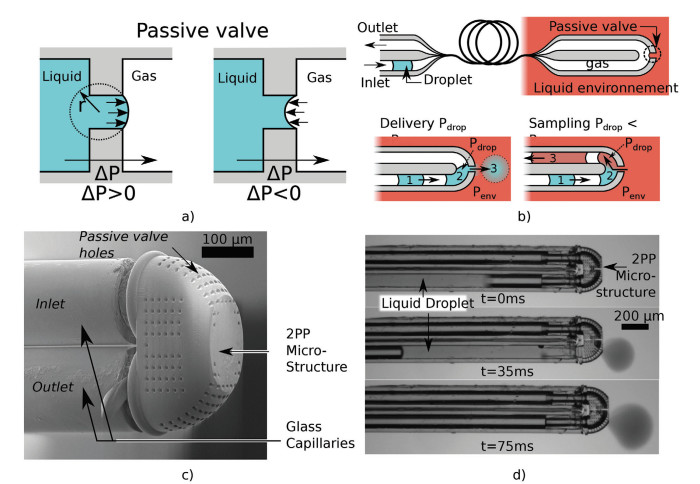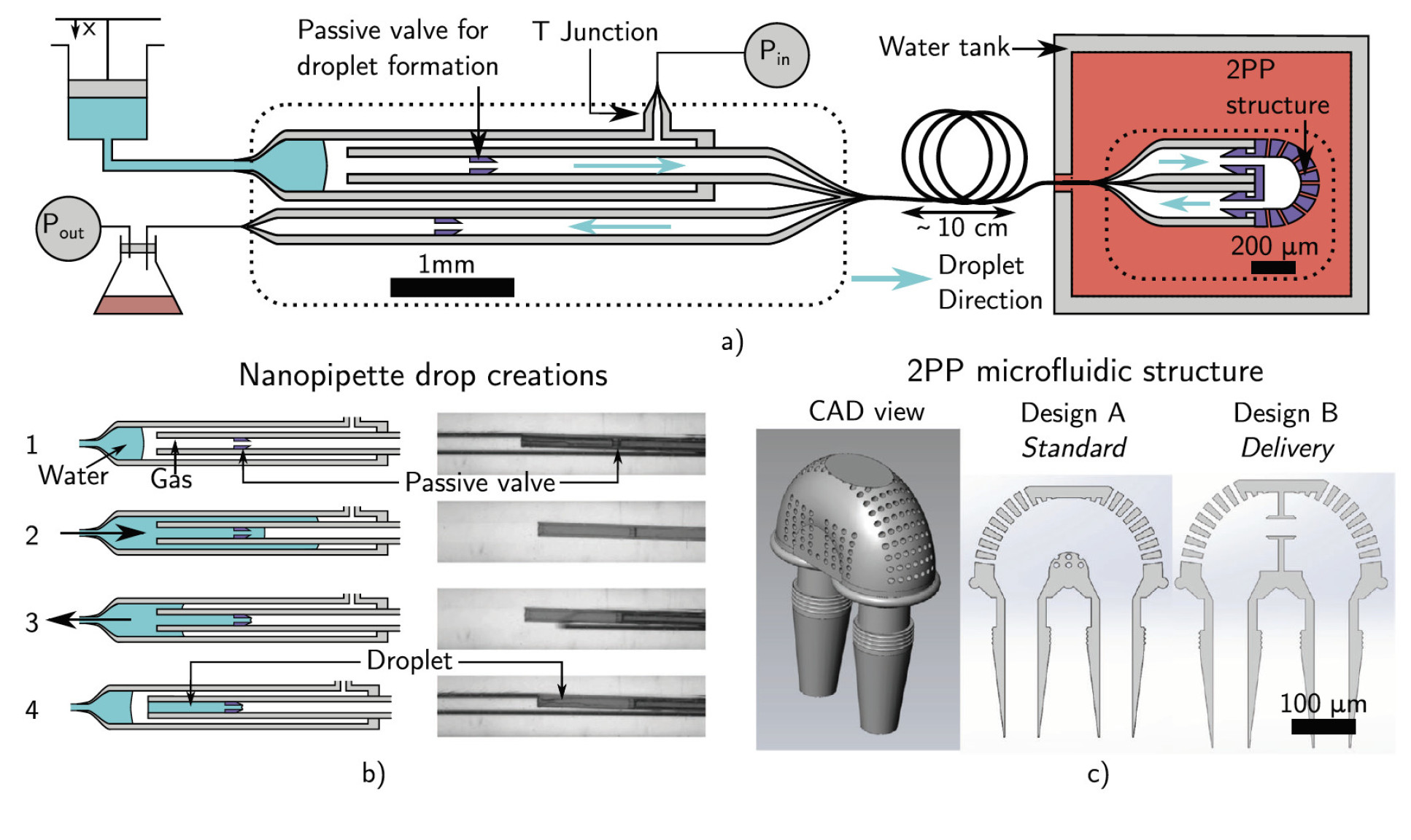A Novel Microfluidics Design at Fibre Tip for Precision Drug Delivery & Sampling

A Hamlyn-led project proposed a novel microfluidics design at fibre tip, aiming to aid precision drug delivery and sampling for cancers and infections.
Biopsy is defined as the removal of a small quantity of biological tissue for histopathological examination, and is the gold standard for the diagnosis of many diseases. For most cancers, and some infections, it is the only way to characterise the disease precisely, therefore, allowing for precision drug delivery and intervention.
However, biopsy can pose risks, cause discomfort and certain side effects to the patient’s health. Alternative diagnostic techniques, such as liquid biopsy, can complement the gold standard of biopsy for diagnosis of disease are therefore pursued and developed.
In particular liquid biopsy, the technique allows for a more comprehensive sampling of the tumours that may be present and it can reduce the need for conducting difficult and risky biopsies from organs such as the brain. In other words, delivery and sampling nanoliter volumes of liquid can benefit new invasive surgical procedures.
Nevertheless, the dead volume and difficulty in generating constant pressure flow limits the use of small tubes such as capillaries.
A Novel Microfuidics Design at Fibre Tip for Precision Drug Delivery and Sampling
Collaborated with researchers from Femto-st and Shanghai Jiao Tong University, our research team at the Hamlyn Centre developed a novel microfuidics design at fibre tip for nanoliter drug delivery and sampling— a two capillary bundle solution for droplet based liquid biopsy.
This work demonstrates sub-millimeter microfuidic chips assembled directly on the tip of a bundle of two hydrophobic coated 100 μm capillaries to deliver nanoliter droplets in liquid environments.

Droplets are created in a specially designed nanopipette and propelled by gas through the capillary to the microfuidic chip where a passive valve mechanism separates liquid from gas, allowing their delivery.
It represents an easy way to deliver droplets, in the order of nanoliters, at the capillary tips using a passive valve mechanism which is widely used in microfuidics.
By adjusting the driving pressure and microfuidic geometry, both partial and full delivery of 10 nanoliter droplets with 0.4 nanoliter maximum error, as well as sampling from the environment are demonstrated.
This system will enable drug delivery and sampling with minimally invasive probes, facilitating continuous liquid biopsy for disease monitoring and in-vivo drug screening.
With the increasing demand for targeted therapy and cell-based intervention, this novel design can also be used for various clinical in-situ, in-vivo, in-vitro applications.
This research was supported by EPSRC Programme Grant “Micro-robotics for Surgery (EP/P012779/1)” (Antoine BarbotDominic J Wales, Eric Yeatman , "Microfuidics at Fiber Tip for Nanoliter Delivery and Sampling", Advanced Science, 2004643, March 2021).
Article supporters
Article text (excluding photos or graphics) © Imperial College London.
Photos and graphics subject to third party copyright used with permission or © Imperial College London.
Reporter
Erh-Ya (Asa) Tsui
Enterprise